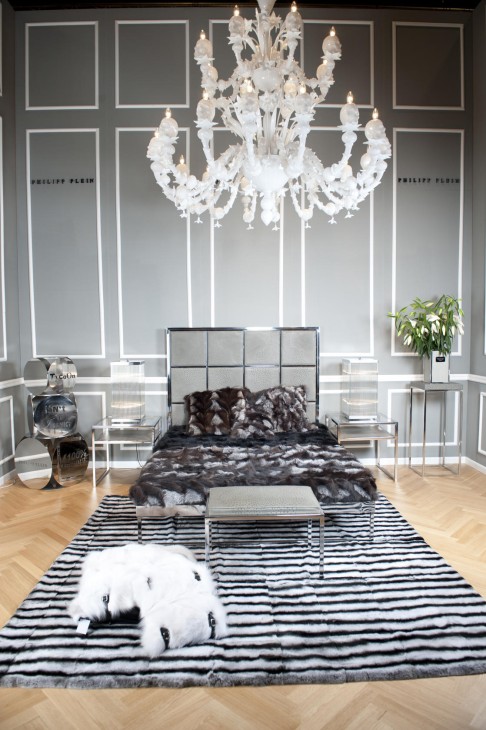
Fashion designer Philipp Plein puts Asia at centre of expansion plan
My interview with Philipp Plein begins, of all places, in a lift, going up to his company's showroom. Just as the lift door closes, his entourage barges in and we are on our way.
The 37-year-old German designer and his team have just taken a helicopter from Macau to Hong Kong in search of stores for his brand expansion in Asia.
Plein began his career in furniture before branching into fashion. In fact, he almost didn't become a designer at all.
"I was supposed to be a doctor because my father is a heart surgeon," he says.
He opted for a law degree instead because, in his eyes, the study would provide a solid, logical base for whatever he wanted to do in the future.
"I'm German, so I have a German brain," he says. "This is the reason why I am so analytical and organised when it comes to making decisions."

When he dropped out of law school to become a furniture designer, his parents were less than pleased. "They were not happy, but they figured that after one year I would not have any money left and would return to school and finish my degree. But I was too proud to come back as a failure. Fortunately, I succeeded and never looked back."
While his father may not have approved of his career choice, he did instil in his son a love for art.
"He took me to the museum every weekend, or when we were travelling," says Plein.
"So I was introduced to this visual world at a very early age. Although I loved it, I was too afraid to be an artist because becoming an artist and finding people who will pay for the work that you do is very rare. So I decided to produce furniture instead."
Plein started his brand in 1998, and launched his official home collection just two years later. By 2008, the company had ready-to-wear collections for men, women and children as well as lines in accessories and couture.
Those who see the rapid growth of my brand today, they haven't seen the past and how hard and long it took to get here
The brand's aesthetic is a hedonistic mix of 1990s Versace, Saint Laurent by Hedi Slimane and Dsquared2, featuring women who are overtly sexy - high-energy goddesses. What Plein's brand lacks in sophistication, it makes up for in high-octane raunch. His runway shows have included flaming vintage cars, roller coasters and performances by the likes of Azealia Banks.
The brand's visibility and bravado has surprised many in the industry, considering it is less than 20 years old.
How does Plein do it? These aggressive moves into prime real estate in the most expensive cities in the world; the ambitious advertising and spectacular fashion shows, all seem large-scale for a brand that has only been a properly recognised entity in high fashion for a few years. And while he declines to go into detail, he insists that growth has happened organically.
"My father always taught me one thing that I will never forget: never buy something you cannot afford. So I have never had credit or a loan with any bank account. This is all self-financed. Those who see the rapid growth of Philipp Plein today haven't seen the past and how hard and long it took to get here," he says.

The brand has Asia at the centre of its strategy. It has 10 boutiques on the mainland, seven in South Korea, and flagships in Hong Kong and Macau. It will open nine more stores this year in Asia, four of which will be up and running in China by the end of August.
"I am very thankful for our success in Asia. When I opened the showroom in Hong Kong just over three years ago I was not expecting such a strong response from the market. The structure we are now designing will continue to reinforce our fast growth," he says.
Plein believes his brand has more promise and room to grow than his competitors. Unlike other luxury brands that have already expanded and are now suffering from overexposure, he thinks what he's offering is young, fresh and different.
"I always compare brands to women," he says, in what sounds like the beginning of a troubling sentence. "Every woman tries to stay as young as possible. They do a lot to look good, like having plastic surgery on their lips, boobs, eyes, nose. We are young. And I am working and designing for my generation."
It's probably not the best of metaphors, but he makes his point.

